Abstract
Enlargement and microbial colonization of the cecum were examined in neonatal mice suckling mothers drinking either water or an aqueous solution of penicillin. The full ceca increased in weight at the same rate in both drug-treated and control mice during the first 15 to 17 days after birth. Thereafter, cecal weight increased at a greater rate in the drug-treated animals than in the untreated controls. At weaning, the ceca in treated mice were two to three times the size of control organs and remained enlarged as long as penicillin was given. The enlarged ceca did not differ histologically from those in controls. From birth, the cecal microflora in the drug-treated mice differed qualitatively and quantitatively and in colonization pattern from the flora of control mice. The ceca of untreated animals were colonized primarily by large populations of lactobacilli during the first week after birth, small populations of coliforms and enterococci during the second week, and enormous populations of bacteroides and certain gram-negative fusiform-shaped anaerobic bacteria during the third week. In contrast, the organs of the treated mice were populated by large populations of coliforms and enterococci during the first week and enormous populations of clostridia and unusual gram-negative nonsporeforming bacteria during the third week. These large abnormal populations were present in the ceca as they enlarged during the third week after birth in the drug-treated animals. These findings confirm that only certain populations of anaerobic bacteria can act to maintain cecal size in normal animals.
Full text
PDF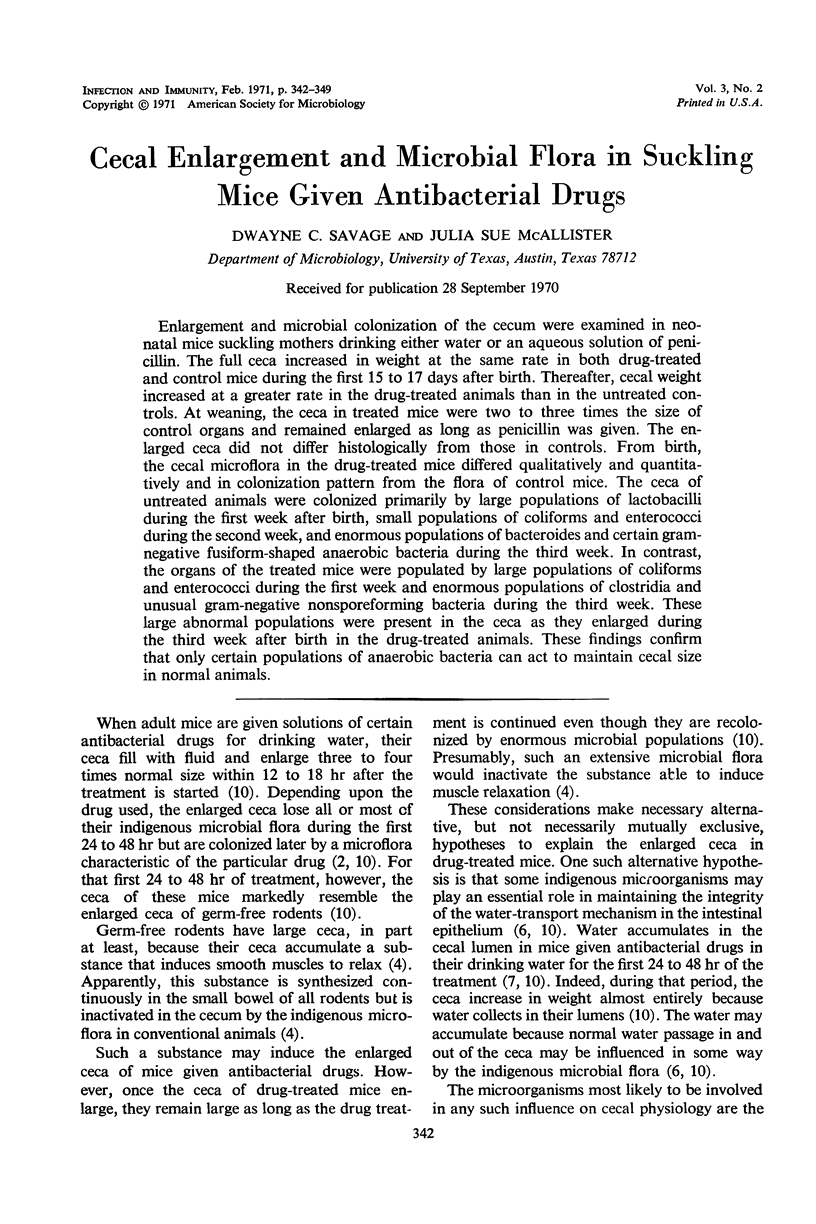
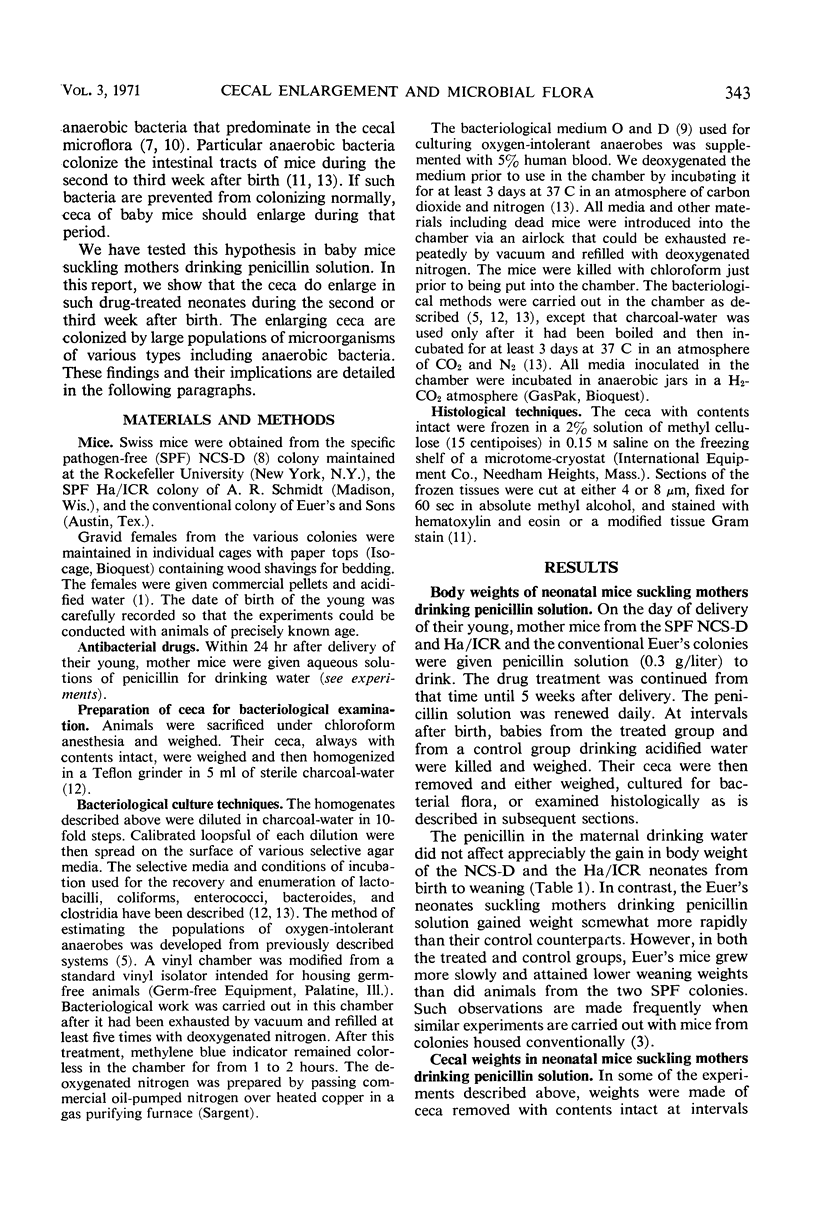

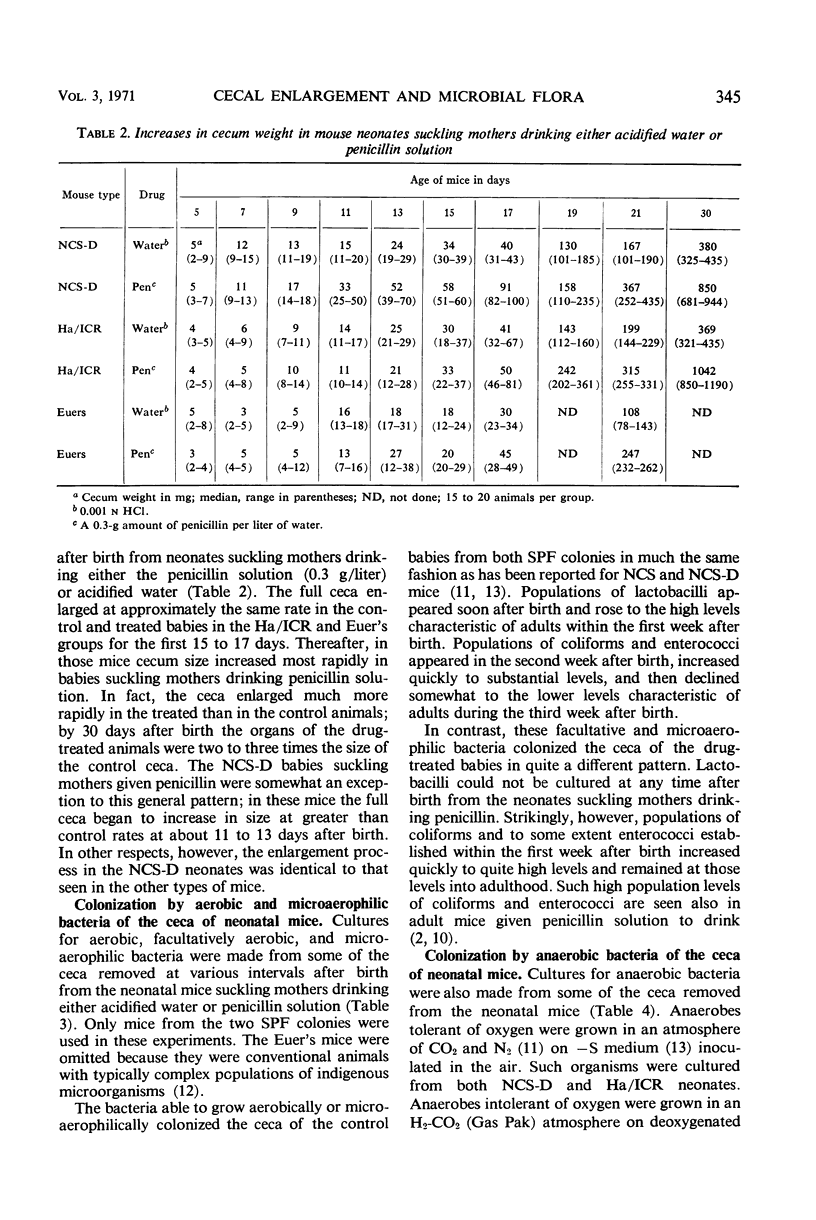
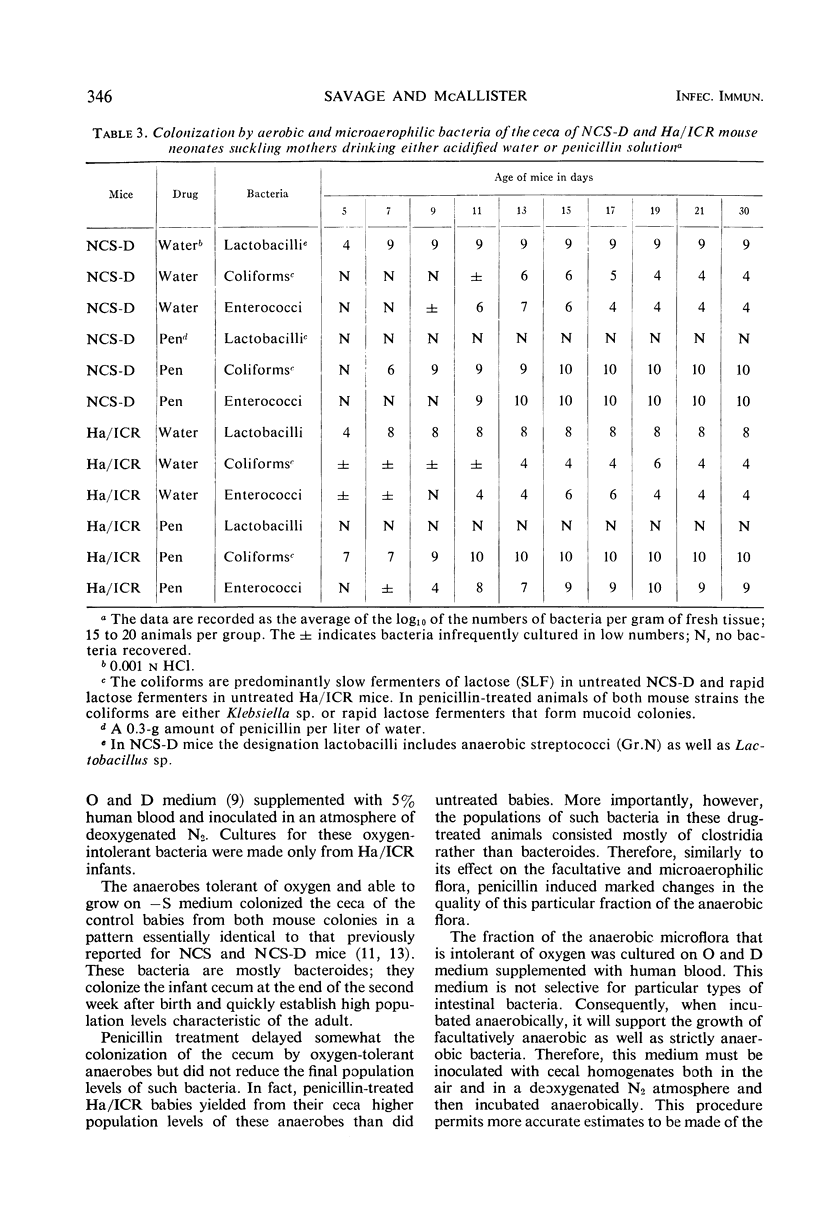


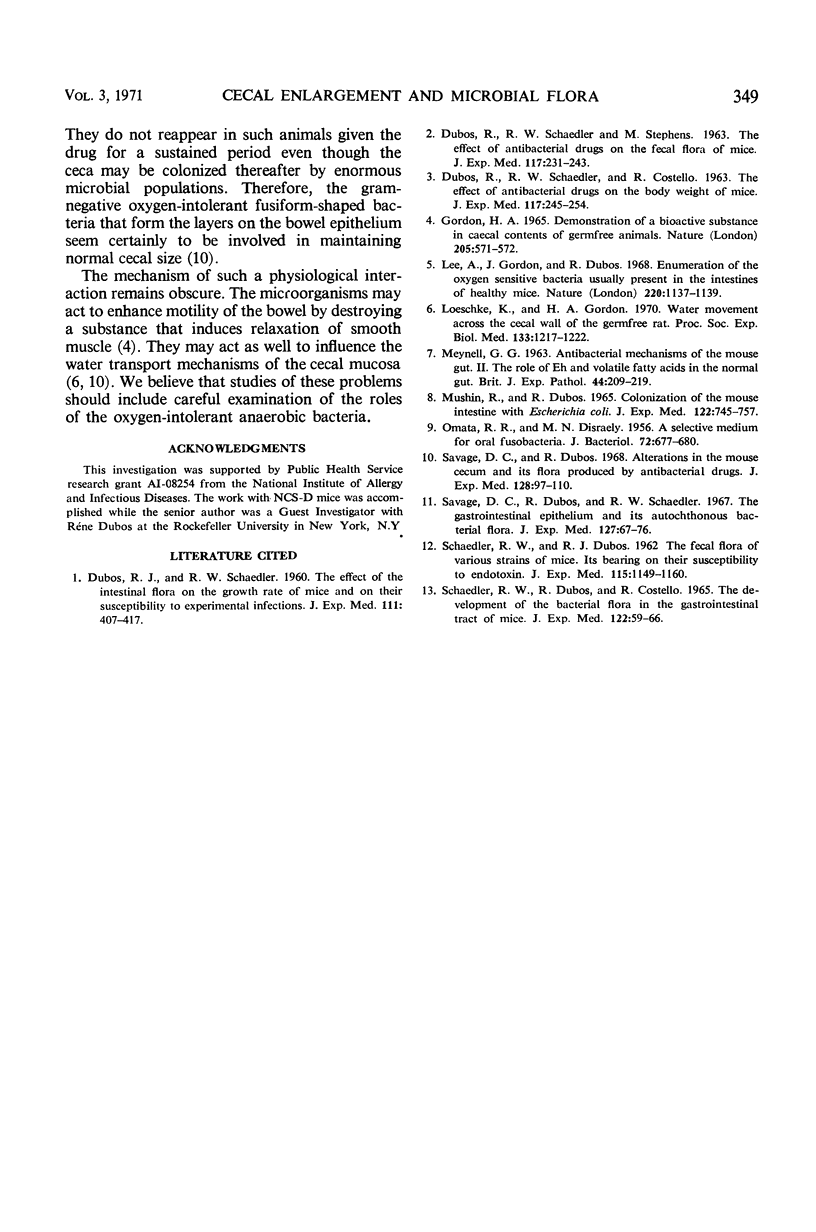
Images in this article
Selected References
These references are in PubMed. This may not be the complete list of references from this article.
- DISRAELY M. N., OMATA R. R. A selective medium for oral fusobacteria. J Bacteriol. 1956 Nov;72(5):677–680. doi: 10.1128/jb.72.5.677-680.1956. [DOI] [PMC free article] [PubMed] [Google Scholar]
- DUBOS R. J., SCHAEDLER R. W. The effect of the intestinal flora on the growth rate of mice, and on their susceptibility to experimental infections. J Exp Med. 1960 Mar 1;111:407–417. doi: 10.1084/jem.111.3.407. [DOI] [PMC free article] [PubMed] [Google Scholar]
- Lee A., Gordon J., Dubos R. Enumeration of the oxygen sensitive bacteria usually present in the intestine of healthy mice. Nature. 1968 Dec 14;220(5172):1137–1139. doi: 10.1038/2201137a0. [DOI] [PubMed] [Google Scholar]
- Loeschke K., Gordon H. A. Water movement across the cecal wall of the germfree rat. Proc Soc Exp Biol Med. 1970 Apr;133(4):1217–1222. doi: 10.3181/00379727-133-34657. [DOI] [PubMed] [Google Scholar]
- MEYNELL G. G. Antibacterial mechanisms of the mouse gut. II. The role of Eh and volatile fatty acids in the normal gut. Br J Exp Pathol. 1963 Apr;44:209–219. [PMC free article] [PubMed] [Google Scholar]
- Mushin R., Dubos R. Colonization of the mouse intestine with Escherichia coli. J Exp Med. 1965 Oct 1;122(4):745–757. doi: 10.1084/jem.122.4.745. [DOI] [PMC free article] [PubMed] [Google Scholar]
- SCHAEDLER R. W., DUBOS R. J. The fecal flora of various strains of mice. Its bearing on their susceptibility to endotoxin. J Exp Med. 1962 Jun 1;115:1149–1160. doi: 10.1084/jem.115.6.1149. [DOI] [PMC free article] [PubMed] [Google Scholar]
- SCHAEDLER R. W., DUBOS R., COSTELLO R. THE DEVELOPMENT OF THE BACTERIAL FLORA IN THE GASTROINTESTINAL TRACT OF MICE. J Exp Med. 1965 Jul 1;122:59–66. doi: 10.1084/jem.122.1.59. [DOI] [PMC free article] [PubMed] [Google Scholar]
- Savage D. C., Dubos R. Alterations in the mouse cecum and its flora produced by antibacterial drugs. J Exp Med. 1968 Jul 1;128(1):97–110. doi: 10.1084/jem.128.1.97. [DOI] [PMC free article] [PubMed] [Google Scholar]
- Savage D. C., Dubos R., Schaedler R. W. The gastrointestinal epithelium and its autochthonous bacterial flora. J Exp Med. 1968 Jan 1;127(1):67–76. doi: 10.1084/jem.127.1.67. [DOI] [PMC free article] [PubMed] [Google Scholar]



